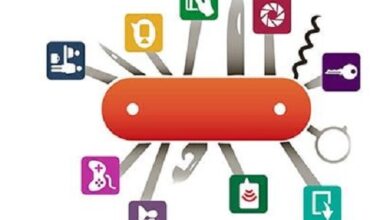Stages of customer service its importance and 4 stages of customer service
What are the customer service stages?
Knowing the stages of customer service is essential to be able to offer a satisfactory experience from start to finish, which translates into a greater probability of obtaining word of mouth recommendations and with it, an exponential increase in sales.
Therefore, in this article we have compiled which are the most important customer stages and the recommendations that you can implement in each one to ensure a successful experience.
The customer service stages are a set of operations that a company performs with all its employees, integrating different departments to guarantee a solid and satisfactory customer experience throughout its entire journey.
Each stage of the customer service process has its own needs, attitudes and behaviors, from knowing and assisting customers in their initial questions, establishing a fluid dialogue and providing a quick and effective response to their requests, to detecting their specific needs to propose improvement actions.
Why is it important to know the stages of customer service?
Having the customer service process divided into stages can ensure that the flow of support is not disrupted by “back-and-forth” situations between teams to resolve the simplest customer inquiries.
It also enables customer service staff to automatically know what to do with different requests, while providing them with a definitive set of support workflows and decision-making patterns. In this way, customers will receive a fully consistent service in each of their requests.
Without a standardized customer service process, employees do not have a sufficient basis to know how to address any type of problems at the different customer contact points or touchpoints , which can lead to duplication of efforts and delays in responses to the clients.
4 stages of customer service
Now that you know what the customer service stages are and what their importance is, we will introduce you to the 4 main stages and how to do them correctly.
1-Pre-contact stage
The first stage of customer service begins long before customers have made their purchase, asked a question, or called to complain about a service or product.
Customer service begins when the customer searches and reaches the brand’s website, when he finds company content on social networks or when he inquires about the communication channels that have been provided and made available to him.
Here are some ways to reinforce the stages leading up to customer contact.
-
Promote training
One of the simplest and most effective ways to prepare to interact with customers is to train your team and staff.
If you’re switching from the phone to the chat box responses, be sure to establish some guidelines and practices for chatting. If you are introducing a new line of products or services, make sure your team is up to date with those changes.
-
Get to know your customers
Especially as customer service strategies continue to move online and through social media, you need to know the people your business is targeting if you’re going to connect with them.
For example, through a buyer persona you can identify who your customers are and establish guidelines for the type of language, videos and content that you will share with them.
-
Be accessible
Contacting your customer support team should be easy for customers. This means that your customer support page, contact information, and frequently asked questions should be easy to find. This also means being available and present on social media.
2-Contact stage
The contact phase in customer service is one of the most crucial moments, as it is the first moment of contact in which you set the tone with your customers. If this is not good, you will hardly be able to achieve long-term customer retention.
Around half of customers say they would go to a competitor after having a single bad experience. Therefore, consciously creating a customer journey and planning what the first experience should look like is essential for it to be effective.
Some tips that you can implement to ensure that the contact phase leaves a great impression on your customers are:
-
Personalize the experience
Behind every sale and transaction is a customer, and behind that customer is an individual person with whom a relationship can be established. Addressing customers by name, referencing the person’s story record, and avoiding scripting or robotic language will go a long way toward making your customers feel valued.
-
Empathize with customer needs
Empathy is very important in all steps of the customer service process, but here it is especially important to understand where customers are coming from. Empathizing is understanding, and customers will recognize it.
-
Communicate clearly and respectfully
To answer questions or explain things to your clients, you must be clear and respectful. Simple language and respectful behavior will help you convey your point of view in a positive way.
3-Post-contact stage
The post-contact phase of customer service is about building lasting relationships and building for the future.
You don’t want your efforts in the pre-contact and contact phase to be wasted by not following up and maintaining the relationship in the post-contact phase. Some recommendations that you can take into account to successfully implement this phase are:
-
Collect customer feedback
Collecting customer feedback through surveys and various tools will help you learn about your customer service process and make improvements when necessary, as well as allowing you to demonstrate interest and transparency in your customer service approach.
-
Learn from the past
How have you retained customers in the past? How have you lost some of them? How have you been able to interact and engage with your customers in a positive way? Identifying these points will help you learn from your wins and mistakes, and will allow you to continually refine your customer service strategy .
4-Customer retention stage
The customer retention stage is different from customer acquisition or lead generation, as it focuses on customers who have already purchased a service or purchased a product.
Retaining customers goes beyond transactions, it is about relationships. Studies show that customers view their relationships with brands in a similar way to their relationships with friends. Customers like brands that are trustworthy , authentic, and aware of what matters to them.
Focus on buying relationships with your current customers to increase their brand loyalty. These shoppers will continue to choose your brand even when other options are presented to them. Some of the recommendations to achieve this are:
-
Offer loyalty programs
The loyalty programs are a good strategy to encourage customers to return to buy your products or services frequently because they can earn rewards, points systems or special benefits.
-
Develop segmented digital strategies
One way to encourage customer retention is to take advantage of digital strategies such as email marketing to send personalized messages by providing special promotions or access to content on how to get the most out of your products and services.
-
Create success stories
If your client has had a good experience with your products or services, take advantage of it to turn it into a testimony of a case study that you can publish on your website or your social networks, recognizing the importance you give to their story.
conclusion
Knowing the stages of customer service is essential to be able to develop an effective strategy that can help resolve doubts and problems that may arise, increasing customer loyalty and retention.




